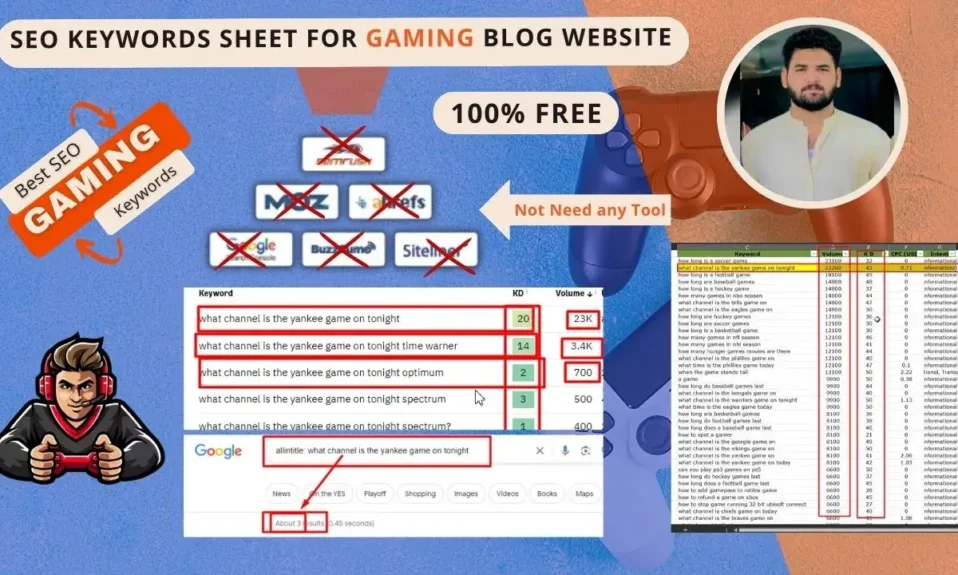
UA → GA4
We are actually about six months into the massive GA4 migration. At this level we’ve settled into what we are able to and might’t do. However there may be nonetheless extra discomfort than what we’d hoped for six months into a brand new product. One of many greatest points is the dearth of session-level data. The system was not constructed with classes in thoughts and a few might argue that’s superb. However a number of instances, you need to perceive how explicit campaigns are working in the meanwhile. For example, how are your Black Friday efforts doing on, you already know, Black Friday? This information is absolutely arduous to come back by in GA4. However concern not, we might be tackling this situation and extra on this weblog!
What this weblog is!
The aim of this weblog is to empower YOU to arrange a real-time channel & marketing campaign dashboard shortly and effectively. This weblog will equip you with 2 SQL queries that can be utilized to tug yesterday’s information and the earlier 30/60 minutes of knowledge from GA4, and show it in a looker studio report.
What this weblog will not be!
This weblog will not be a complete tutorial on GA4, BigQuery, or the mix of the 2. This weblog is a way to an finish to get you up and operating with a real-time dashboard. If you wish to perceive all the detailed facets of BigQuery & GA4, I’d advise taking the great Simmer course led by the good Johan van de Werken. That course is a deep dive into GA4 & BigQuery. Our method immediately is to empower entrepreneurs to discover a crucial report that they might be lacking. We’ll be taking shortcuts and skipping some fundamental definitions. You’ve been warned! Now let’s go!
The issue with GA4 attribution information? (nicely, one of many issues)
There are a number of points with GA4 however there’s one which comes up time and time once more. One which simply causes heartbreak amongst so lots of my purchasers. One which rips individuals’s souls in half as I see them wince each time I point out it…yesterday and immediately’s information simply doesn’t work correctly in GA4. The information doesn’t absolutely exist within the platform till 48 hours go by.
What do you imply by that?
Effectively let’s have a look…in response to Google Analytics documentation, GA4 can take up to 48 hours to process data from your website or app.

I’ve seen the information processing instances be each quick and gradual, however the reality is you possibly can’t depend on the information populating shortly. This generally is a actual pain-in-the-neck for all companies, however particularly for these within the ecommerce business.
However Josh! How am I going to see how my vacation sale is performing? How can we make fast selections to see how our campaigns are changing YoY and even DoD? Can we not less than go into actual time to get a intestine examine of how our campaigns are performing within the final half-hour? We simply despatched an e mail out–are individuals clicking it?
Actual-Time Fails in GA4
Effectively that’s type of sophisticated too. GA4 at the moment shows solely the primary contact data in real-time on an mixture stage.
So for example if I’m going to our web site with this UTM hyperlink: https://ftf.co/?utm_source=josh&utm_medium=lookiminvisible&utm_campaign=trytofindme, you’ll hope that this attribution supply would not less than present up someplace in Realtime to indicate how many individuals are on the positioning. Let’s see if that’s the case.
First we go to the hyperlink.

Now we navigate into Realtime. The very first thing I discover within the attribution part of Realtime is that we solely have entry to First Consumer information. This isn’t tremendous helpful as I don’t actually care about how an individual initially got here to my web site, I’m to see why a consumer is there proper now. Think about the state of affairs the place you ship out 1000 emails about your Black Friday sale and then you definately navigate to see how many individuals are on the positioning from the e-mail you simply despatched out. Out of the blue you see 99 individuals from an e mail about March Insanity- not tremendous helpful huh?

Effectively, does that information simply not exist then? If I dive into the consumer snapshot and discover my very own session (by probability as there may be not at the moment a technique to discover a particular consumer within the snapshot) you possibly can see that the marketing campaign, supply and medium information exists…so it clearly acknowledges that I’m on the positioning with these information parameters.

Perhaps we are able to discover the session information within the comparability filters? I exist right here and subsequently I ought to be capable of use my supply information to search out myself even when it’s not explicitly accessible within the dashboards. Nope, incorrect once more! Although Google makes it accessible in your filters, you possibly can’t truly use session supply as a real-time filter.

Thus, it’s unattainable to see what channels are driving your web site visitors at this very second. Except… there was a technique to get real-time attribution information all the way down to virtually the second. Effectively guess what, Bob – we are able to with BigQuery!
Join BigQuery
Okay so let’s begin this course of. The very first thing you’ll must do is just remember to join GA4 to BigQuery. First you’ll need to navigate to the admin part of GA4 and be sure you have an lively hyperlink with BigQuery. In the event you haven’t began setting one up but, you’ll must create a BigQuery account after which link your GA4 project to it.


After getting an lively hyperlink, it should appear to be this:

The BigQuery connection will take a day or two to start out populating the information into your BigQuery undertaking, so be affected person. Moreover, it should ONLY begin populating information after getting related it; there may be at the moment no help for retroactive GA4 information in BigQuery.
NOTE: It is possible for you to to create a free hyperlink however you’ll positively need to improve to the paid model of BigQuery (it doesn’t value very a lot to retailer the GA4 information.) With out upgrading to paid, you won’t be able to entry the export kind “streaming” which we’ll want for any kind of actual time dashboard. Moreover, you won’t be able to retailer greater than two months of knowledge at a time with out upgrading, so for the sake of having access to full performance, make sure that so as to add a billing account.
You’ll be able to select whether or not or to not export Consumer Knowledge – however I’d recommend it. We’re not going to be utilizing it for this tutorial however will probably be useful down the street.
The Stomach of the BigQuery Beast
Now, we’ll need to navigate to BigQuery. Go to the Google Cloud Console https://console.cloud.google.com/welcome?undertaking=PUT-PROJECT-ID-HERE. This could carry you on to the proper undertaking.
It is best to see a brand new dataset beneath your project_id known as analytics_{{streamid}}.
In the event you chosen “Day by day Export”, “Streaming Export”, & “Consumer Knowledge Export” in your connector you will note the next datasets:

Let’s break them down:
- Occasions: That is your each day repository of historic analytics information. As soon as a day, BigQuery takes the intraday information and “deposits” it into the occasions dataset. It lives in occasions from that time on.
- Events_intraday: That is your “real-time” information, it shows the final 12-24 hours value of knowledge and continues to populate in close to real-time. You may even see yesterday’s information in there till BigQuery processes and packages to the occasions dataset however normally you’ll see principally the final 24 hours.
- Pseudonymous_users: This reveals details about the “consumer” in relationship to the GA4 cookie identifier (consumer ID). This has data on machine, geo, audiences, and so forth all tied as much as the only consumer.
- Customers (not listed): In case you are sending in Consumer IDs, you’d have one other dataset of the identical data as pseudonymous consumer data listed by the consumer ID
For now we’re going to be specializing in the events_intraday dataset for the aim of this train however the identical logic will be utilized to the occasions dataset.
Manipulating and Condensing the Tables
In the event you dive right into a preview of a kind of datasets you’ll see A LOT of columns.

The GA4/BigQuery connector provides us a number of information to mess around with however that doesn’t essentially imply we’d like all of it all the time. Querying in BigQuery is what finally ends up costing the massive bucks and querying a big dataset like GA4 information can add up! Moreover, among the information is damaged down into single columns that we’re used to seeing as one column (i.e. Session Supply & Session Medium). To get to the information we’d like and the way we’d prefer to see it, we have to construct our personal tables from the present datasets.
Constructing our personal devoted desk with simply the data we’d like will make discovering the information & visualizing the tables in Looker Studio manner simpler and it’ll prevent fairly a little bit of moola. Moreover, it’ll make it far more light-weight, making it quicker to replace. Throughout wins!
So now we’d like some SQL! “DID YOU SAY SQL?! OMG I DIDN’T KNOW THERE WAS CODE INVOLVED. I’VE INVESTED ALL THIS TIME IN YOUR LONG-ASS ARTICLE AND NOW I HAVE TO CODE!?”
Wait, wait, earlier than you get all huffy and puffy, I’ve acquired a easy answer. Ahmed Ali put out an extremely useful web site which does all of the be just right for you: GA4SQL.
There’s a lot to mess around with right here however let’s check out two code snippets to assist us obtain probably the most crucial advertising and marketing real-time information

So what does this code do? A few issues:
This SQL question is designed to categorise and mixture session information from an analytics dataset. It categorizes classes into channels based mostly on the supply and medium of the session, utilizing a collection of CASE statements to find out if the session is from the next:
‘Direct’, ‘Cross-network’, ‘Paid Purchasing’, and numerous different outlined channel sorts reminiscent of ‘Paid Search’, ‘Paid Social’, ‘Paid Video’, ‘Show’, ‘Natural Purchasing’, ‘Natural Social’, ‘Natural Video’, ‘Natural Search’, ‘E-mail’, ‘Associates’, ‘Referral’, ‘Audio’, ‘SMS’, and ‘Cellular Push Notifications’. If none of those instances match, it defaults to ‘Unassigned’.
The question then aggregates this data, together with different session particulars just like the marketing campaign identify, area, nation, touchdown web page, machine class, and date to rely distinct classes, sum engaged classes, purchases, and income, and rely complete customers. That is finished inside a subquery that extracts and prepares this information from occasion parameters, visitors sources, and consumer IDs, filtering the information for yesterday.
The question gives an in depth breakdown of consumer classes by numerous advertising and marketing channels and different dimensions, and calculates key efficiency metrics reminiscent of engagement, purchases, and income for a given date.
Nice, so now that you’ve a fundamental understanding of what the code is doing, we have to manipulate it additional to get to what we’re in search of with this report. At the moment, the GA4SQL web site doesn’t have an possibility for choosing from the intraday dataset, which is the dataset that we have to get actual time reviews. Moreover, because it doesn’t pull from intraday, sure dimensions reminiscent of hour and minute are lacking.
With that mentioned, a number of modifications have to be made to the code to make it work for this function:
1. It assumes we need to pull from yesterday’s information. We actually simply need this to tug from immediately’s information. In the event you’d prefer to even have historic information, you should use the code above with some slight modifications (reminiscent of date vary) to construct a totally complete BigQuery historic report, however we’re at the moment after the final 24 hours of knowledge.
2. There’s no point out of hours or minutes here- what if we need to see the exercise of our web site within the final half-hour? We received’t be capable of try this with the code above.
So there’s a bit of modification we have to make.
We’ll need to construct a view in BigQuery. A view is a digital desk created by a SQL question on our essential desk. This enables for a a lot smaller, versatile information pull.
We might be constructing a “by the minute” view for our “final 30 minute LS report”.
Final half-hour:
Some edits have to be made to the SQL question to offer the proper time information, and precisely pull the final half-hour of knowledge out of your supply.
- Replace line 186 along with your desk ID within the format: project_ID.Dataset_ID.Table_ID.
- Replace traces 158 & 159 with the proper offset based mostly on the time zone set in your Google Analytics account. This may be present in Analytics beneath Admin > Property > Property particulars > Reporting Time Zone. The worth needs to be a string like “-08:00” or “+2:00”
- Replace line 165 with the proper offset. This interval ought to at all times be a optimistic integer. Nevertheless, In case your time zone is forward of UTC you have to additionally change the TIMESTAMP_SUB perform to TIMESTAMP_ADD, together with updating the interval worth. This line will output the datetime that your occasion occurred in response to the time zone set in your GA4 account.
To get the final 60 min of knowledge fairly than the final 30 min
- On line 189 of the question change “INTERVAL 30 MINUTE” to “INTERVAL 60 MINUTE”
Okay we’ve our code now.
Lets run the SQL. In BigQuery, it would be best to navigate to your GA4 events_intraday information set. As soon as you might be there, run a question.

In your question tab, paste the code above that you simply’d prefer to run. Finally, it could be nice to have the choice for each the final 30 minutes and the hourly one. Crucial factor is to modify out the dataset within the SQL from with YOUR DATASET ID. You’ll be able to command/ctrl F and seek for intraday inside the SQL. This could get you to the part that it is advisable to change.

When that is finished it can save you your BigQuery copy as a view or save as view relying on should you’ve already saved the question or not.

Within the prime proper it should additionally let you know how giant the file is. That is what you should use to find out the price of querying the dashboard each minute. The above quantity for this question 95MB which in complete should you pull each minute of on a regular basis for a month would complete 4104000 MB. Only for this question, to have it run in actual time we’d be round $18 {dollars} monthly (not dangerous) in response to Google Cloud Platform Pricing however this positively provides you a way of the necessary of excellent consolidation of your Question weight & the steadiness of how typically you pull the information.
When you save a duplicate to a view or put it aside as a view it should immediate you so as to add it to a undertaking and present information set. Select your information set and identify it no matter you’d like.


Now you must have a view with a a lot lighter data_set. That is what we might be utilizing to construct the Looker Studio report off of.

Add Actual-Time Knowledge to Looker Studio
Copy Our Template:
Now we’re able to create a realtime dashboard in Looker Studio! You’ll be able to both create a brand new report from scratch OR you should use this template:
BigQuery Realtime Dashboard Template [MAKE A COPY]
To make use of this template, click on the hyperlink above. Then click on the 3-dot menu within the prime proper nook and choose “Make a duplicate.”

You’ll be prompted to pick a brand new information supply:

Click on the dropdown beneath “New Knowledge Supply” and choose “Create Knowledge Supply”:

Construct Your Personal:
Wish to construct your individual? Observe the steps beneath:
Now it’s similar to another Looker Studio report. Navigate to LS and add a brand new information supply. Seek for the BigQuery connector and choose it.

Discover your undertaking ID and you must have your newly created views within the record to select from.

Customise Your Report For Actual-Time
Decide the Actual Time Desk View that you simply’d like to make use of. We’ll use the 30 min one however you possibly can choose any and all. The one distinction is the prompt information freshness.
An necessary step earlier than shifting on is to alter the information freshness on the information supply

Discover your information supply that you simply simply added

Click on on the information freshness:

Now you possibly can change the timing of when the information refreshes from BigQuery (i.e. it pulls the sql request once more). Do not forget that the quicker this updates the extra $ you’ll be paying quite a bit. For the 30-min dashboard, I’d recommend a knowledge freshness of each 1 minute. For the hourly one, you possibly can in all probability get away with as soon as an hour or as soon as each 15 minutes. It’s actually as much as you!
In the event you’d like to tug each 1 min, you possibly can click on the customized radio button and alter the interval to each one 1min.

Now we’re prepared to start out constructing reviews, the unique intention of this text was to get session information in an actual time report so lets begin there. There’s actually infinite combos of visualizations that you are able to do however I like constructing a time collection of knowledge by the minute and a few pie charts however you possibly can actually pull in no matter you’d like.

Just a few notes concerning the above information:
- Typically there are null values within the information for no matter purpose…that appropriate themselves afterward, you’ll simply must cope with these, you possibly can filter them out should you’d like.
- A time collection chart will restart initially regardless that its after the occasion. There’s a SQL clear up for this too which I’ll observe beneath
All and all this can be a tremendous complicated and deeply intense technique to get to real-time advertising and marketing information, and whereas essentially that is cool and the information is yours and at your fingertips to do what you need…it’s possible you’ll need to discover a easier answer like Piwik Professional or one other various, which doesn’t have the identical information lag.
Further modifications:
Final day of knowledge pulled by hour
Some edits have to be made to the SQL question to offer the proper time information, and precisely pull the final 24 hours of knowledge out of your supply.
- Replace line 186 along with your desk ID within the format: project_ID.Dataset_ID.Table_ID.
- Replace traces 158 & 159 with the proper offset based mostly on the time zone set in your Google Analytics account. This may be present in Analytics beneath Admin > Property > Property particulars > Reporting Time Zone. The worth needs to be a string like “-08:00” or “+2:00”
- Replace line 165 with the proper offset. This interval ought to at all times be a optimistic integer. Nevertheless, In case your time zone is forward of UTC you have to additionally change the TIMESTAMP_SUB perform to TIMESTAMP_ADD, together with updating the interval worth. This line will output the datetime that your occasion occurred in response to the time zone set in your GA4 account.
#RealTime #Session #Attribution #Time #Black #Friday












